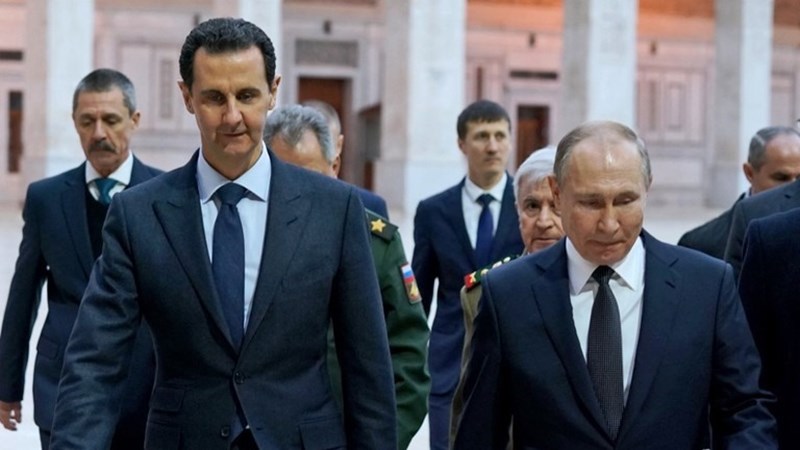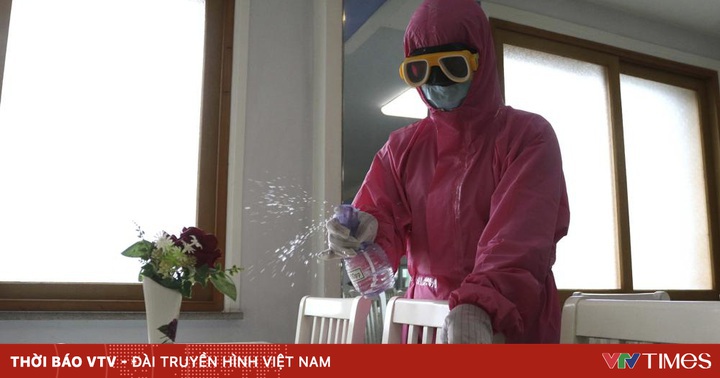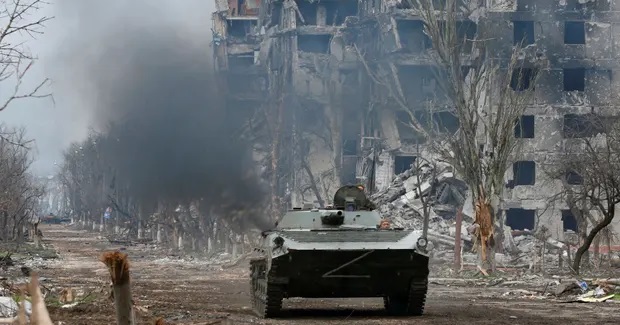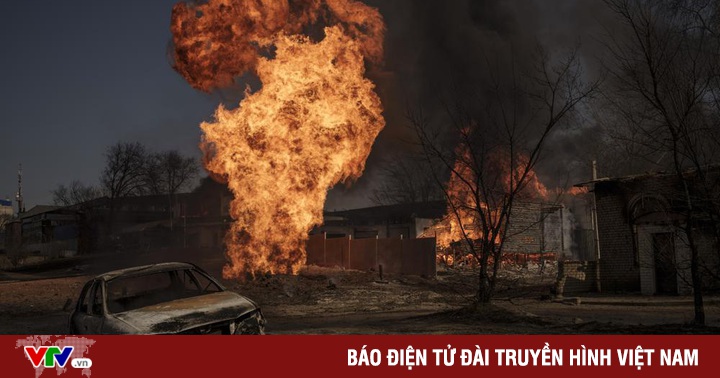With its strategic location and important symbolic significance, Mariupol is considered the focal point of the fighting as well as the “red line” in the Russia-Ukraine negotiations.
Recent fighting continued to intensify in Mariupol, a port city in southeastern Ukraine. The Russian army besieged this Azov coastal city and demanded that the resistance forces surrender their weapons.
However, Mariupol mayor advisor Petro Andriushchenko on April 17 rejected Russia’s “ultimatum” and announced that it would “continue to organize the defense”. Ukrainian Prime Minister Denys Shmyhal said on the same day that Ukrainian forces remained in the city of Mariupol and “they will fight to the end”.

A demolished residential building in the city of Mariupol, Ukraine, on April 17. Image: Reuters.
Ukraine’s Foreign Minister Dmytro Kuleba said on April 17 that “the situation in Mariupol is both militarily dire and heartbreaking”. According to him, the development of fighting in this port city could be a “red line” that determines the progress in peace talks between Moscow and Kiev. Ukrainian officials asserted that if Russian forces “destroy” the defensive units in Mariupol, negotiations between the two sides will end.
Meanwhile, Russia is also said to be determined to fulfill its goal of capturing Mariupol fortress, because the city holds special strategic significance for Moscow.
According to a security source from the European Union (EU), Mariupol is very important to President Vladimir Putin, because if Russian forces win here, he can declare his goal of “de-fascistization”. in the military campaign in Ukraine was successful.
A secretary to the mayor of Mariupol said Russia had planned to hold a victory celebration in the city on May 9, the day Moscow marked its victory over Nazi Germany in World War II.
This plan, if implemented, will mean a lot to Russia, because the core force defending in Mariupol is the Azov Battalion, a far-right armed group that Moscow considers “fascist elements”.
The forerunner of the Azov Battalion was a paramilitary group known as the “blacks”, often described as neo-Nazi and white supremacist. After the 2014 Maidan protest movement, this force was merged into the National Guard under the Ministry of Internal Affairs of Ukraine. Western military experts often describe the force as “radical nationalist” and “anti-Russian”.

Armor of Russian forces during a battle near the Azovstal plant on April 12. Image: Reuters.
After weeks of fighting with Russian forces on the streets of Mariupol, the gunmen of the Azov Battalion are withdrawing into the Azovstal iron and steel plant, one of the largest metallurgical facilities in Europe, located in the industrial area south of the city. city, isolated from densely populated inner cities.
“They have turned the thick concrete tunnels at this factory site into a fortress,” said Victor, a colonel in the Ukrainian army, who did not give his full name. “That tunnel system is where they rest, move safely and launch attacks on the encircling force.”
Colonel Victor said that this is the reason why Russian forces cannot deploy infantry units to the large Azovtal factory, but mainly use round-the-clock air attacks and artillery to consume defense forces.
The destruction of this “fortress” is a condition that Russian forces need to fulfill in order to take full control of Mariupol, a city not only in the territory claimed by the self-proclaimed Donetsk People’s Republic, but also a part of it. in President Putin’s vision of “Novorossiya”, a territory along the Black Sea coast stretching from eastern to southern Ukraine that he considers “the historic land of Russia”.
Observers say that these reasons have made Mariupol a target for Russia from the beginning when the conflict broke out.
Control of the city would help create a seamless land corridor from Luhansk to Donetsk and down to Crimea. For Moscow, this land corridor will ensure the ability to control the Azov coast as well as control sea supply routes to Ukraine.

Location of the city of Mariupol in southeastern Ukraine. Graphics: AP.
“The takeover of Mariupol will lay the groundwork for the next step in Russia’s military campaign in the Donbass, as there are many signs that Ukraine can give a strong resistance in the Donbass thanks to military support from the West,” an expert said. anonymously in Beijing who studies geopolitical issues told the Global Times. “This is a battle that Russia cannot afford to lose.”
According to Professor Alex Bellamy from the Institute for the Study of Conflict and Peace at the University of Queensland, Australia, Mariupol is currently in many directions of attack by the Russian military.
“Russia’s strategic goal seems to be to combine forces from Crimea with the advance from Donbass, forming a seamless territory controlled by Russia along the southeastern coast of Ukraine,” he said. “Mariupol’s position clearly thwarted that goal.”
The next phase of Russia’s military campaign in Ukraine is likely to begin in the next few days, NBC News quoted two senior US defense officials as saying. Meanwhile, Ukraine is also actively preparing to respond.
While the Russia-Ukraine conflict has not yet subsided, US Secretary of State Antony Blinken told European allies last weekend that Washington believes Russia’s military activities in Ukraine could last until the end of 2022. , the US and NATO are increasing the shipment of “most sensitive” weapons systems to Ukraine, the risk of making the crisis more unpredictable, experts assess.
Smoke rises from the Azovstal factory on April 18. Video: RIA.
At such a time when the hostilities are becoming increasingly tense and unpredictable, capturing Mariupol will give Russia a great advantage and deal a heavy blow to the fighting spirit of Ukrainian forces, according to Wang. Yiwei, director of the Institute of International Affairs at Renmin University, China.
However, Russian forces will face no small challenge to in this endeavor. “No one knows how much food and ammunition the defenders in Mariupol have and how long they can resist, but with orders not to surrender, they have no other way,” said analyst Oleh Zhdanov. military in Kiev, said. “They are surrounded on all sides in their fortress, and will have to resist to the end.”
Vu Hoang (According to Global Times, Guardian)
at Blogtuan.info – Source: vnexpress.net – Read the original article here




